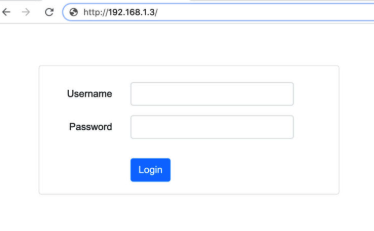The IP address 192.168.1.3 is one of the private IP addresses used to access a router’s admin panel. It allows users to configure their home network, troubleshoot connectivity, and enhance security settings. Let’s explore how you can efficiently access and utilize 192.168.1.3 for your router.
Step 1: Connect Your Device to the Router
Before starting, ensure your device is connected to the router either through:
- Wi-Fi: Use the default SSID and password provided on the router label.
- Ethernet: Connect via a LAN cable for a more stable connection.
Step 2: Open a Web Browser
Launch a web browser such as Chrome, Edge, or Firefox on your connected device.
Step 3: Enter 192.168.1.3 in the Browser
In the address bar, type http://192.168.1.3 and press Enter. If the login page doesn’t appear, confirm your device’s connection to the router or check for alternative IP addresses.
Step 4: Log in to the Router Admin Panel
Once the login page loads, enter the default credentials:
- Username: admin
- Password: admin or refer to your router’s manual for specific details.
If these don’t work and you’ve previously changed the credentials, resetting the router will restore them to default.
Step 5: Customize Router Settings
After logging in, you can access various settings to optimize your network:
- Change SSID and Password: Secure your network with a custom SSID and strong password.
- Device Management: View connected devices and block unauthorized users.
- Port Forwarding: Enable specific applications like gaming or VoIP services.
- Firmware Updates: Keep your router updated to prevent vulnerabilities.
- Parental Controls: Limit internet access for specific devices or times.
Troubleshooting Common Issues
Encountering problems while accessing 192.168.1.3? Here’s how to resolve them:
- Unable to Access the IP Address
- Verify that your router uses 192.168.1.3 as its gateway.
- Check your connection and restart both your router and device.
- Forgot Login Credentials
- Press and hold the router’s reset button for about 10 seconds to reset it to factory settings.
- Slow Network Speed
- Reduce the number of connected devices.
- Place the router in a central location free from obstructions.
Benefits of Accessing 192.168.1.3
Using this IP address to access your router opens up a range of possibilities, such as:
- Strengthening your home network security.
- Optimizing internet speeds for specific activities.
- Troubleshooting issues without the need for external support.
Pro Tips for Managing Your Router
- Secure the Admin Panel: Change the default admin password to prevent unauthorized access.
- Enable WPA3 Encryption: Upgrade your Wi-Fi security by switching to WPA3 if available.
- Schedule Router Reboots: Periodic restarts help maintain network stability.
- Monitor Firmware Updates: Stay updated for enhanced features and security fixes.
Conclusion
With 192.168.1.3, managing your home router is straightforward and empowers you to optimize your network for speed, security, and reliability. Following this guide, you’re ready to make the most of your router settings.
FAQs About 192.168.1.3
What should I do if the login page doesn’t load?
Ensure your device is connected to the router and verify that 192.168.1.3 is the correct IP address for your device.
Can I change the default IP address?
Yes, you can change the default IP address via the admin panel under LAN settings.
How do I reset my router to factory settings?
Locate the reset button, press and hold it for 10 seconds, and release to reset.
